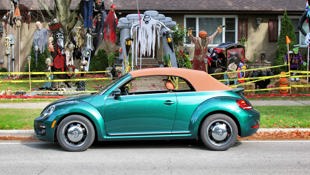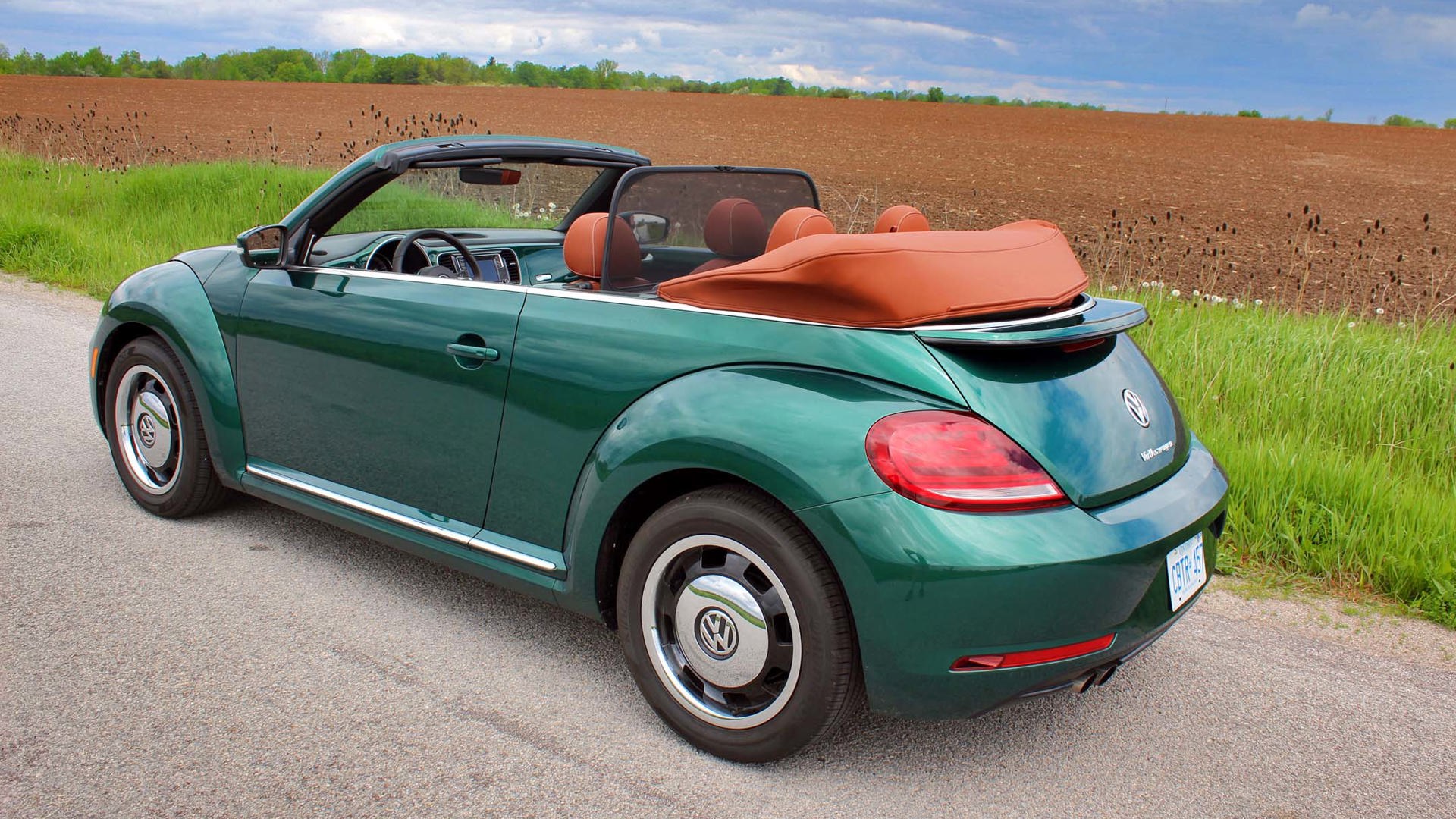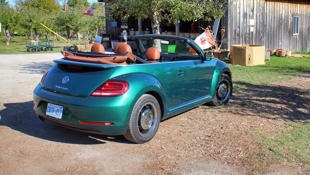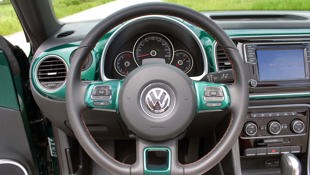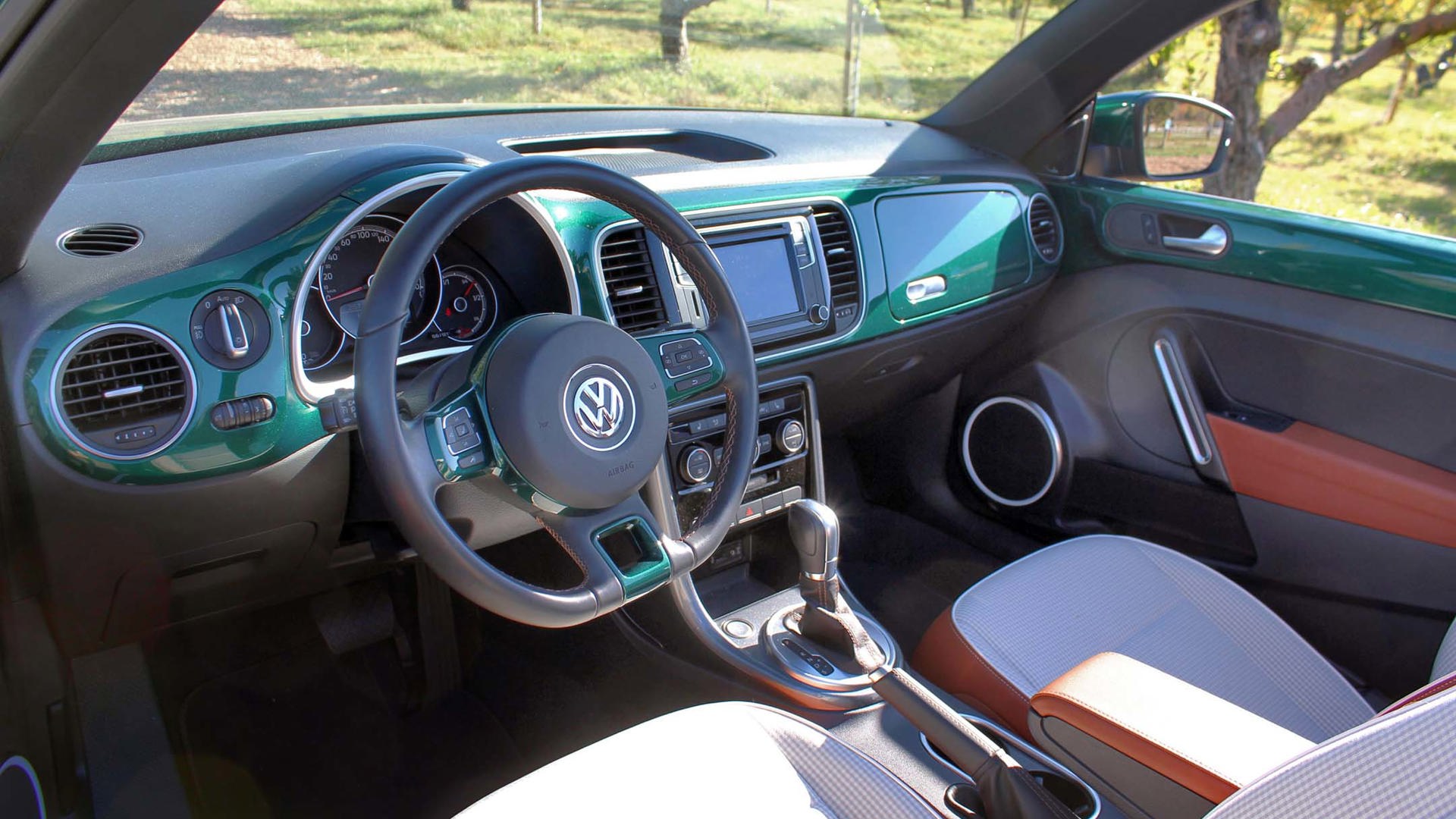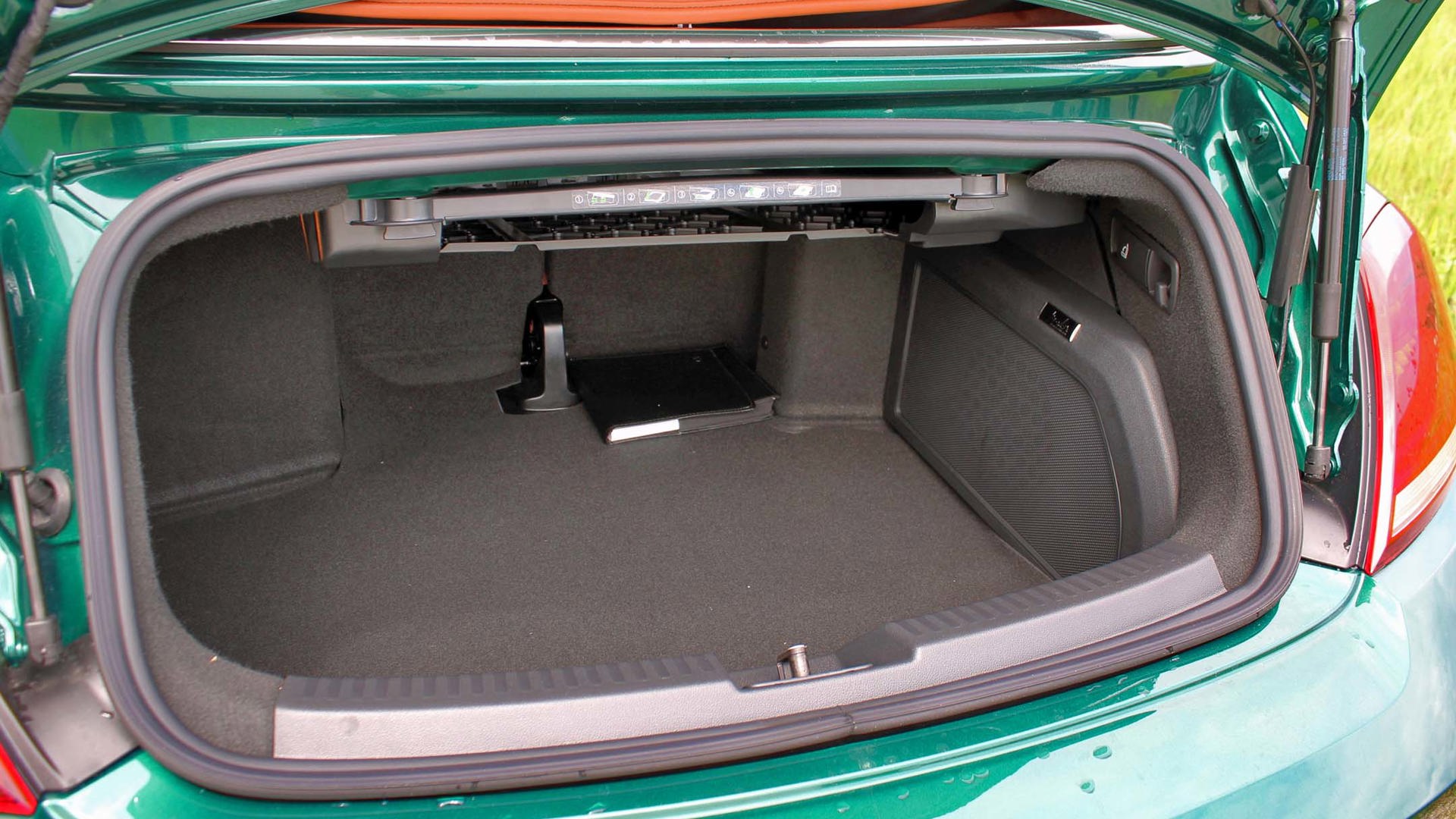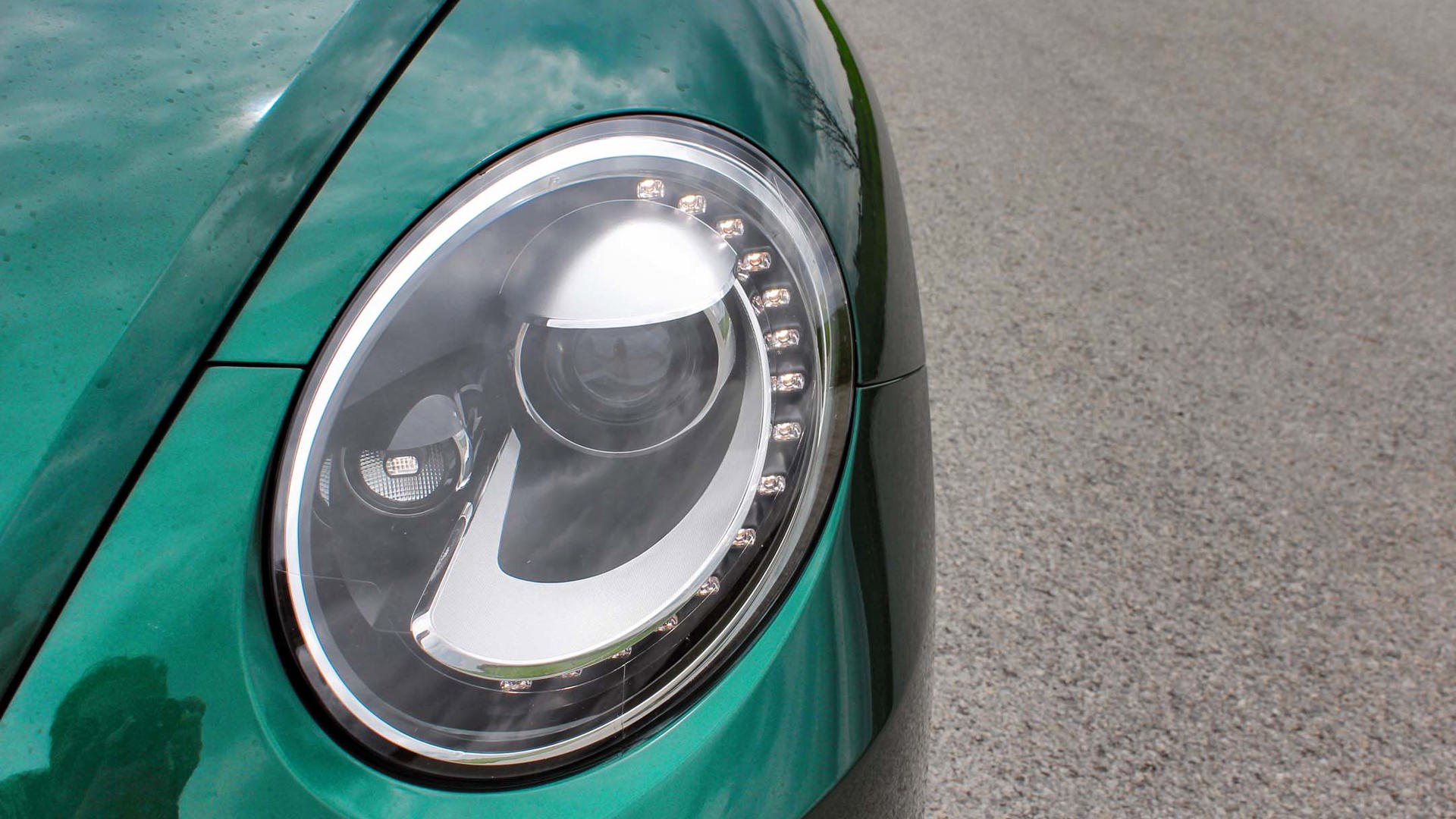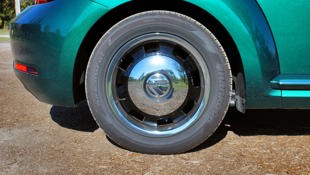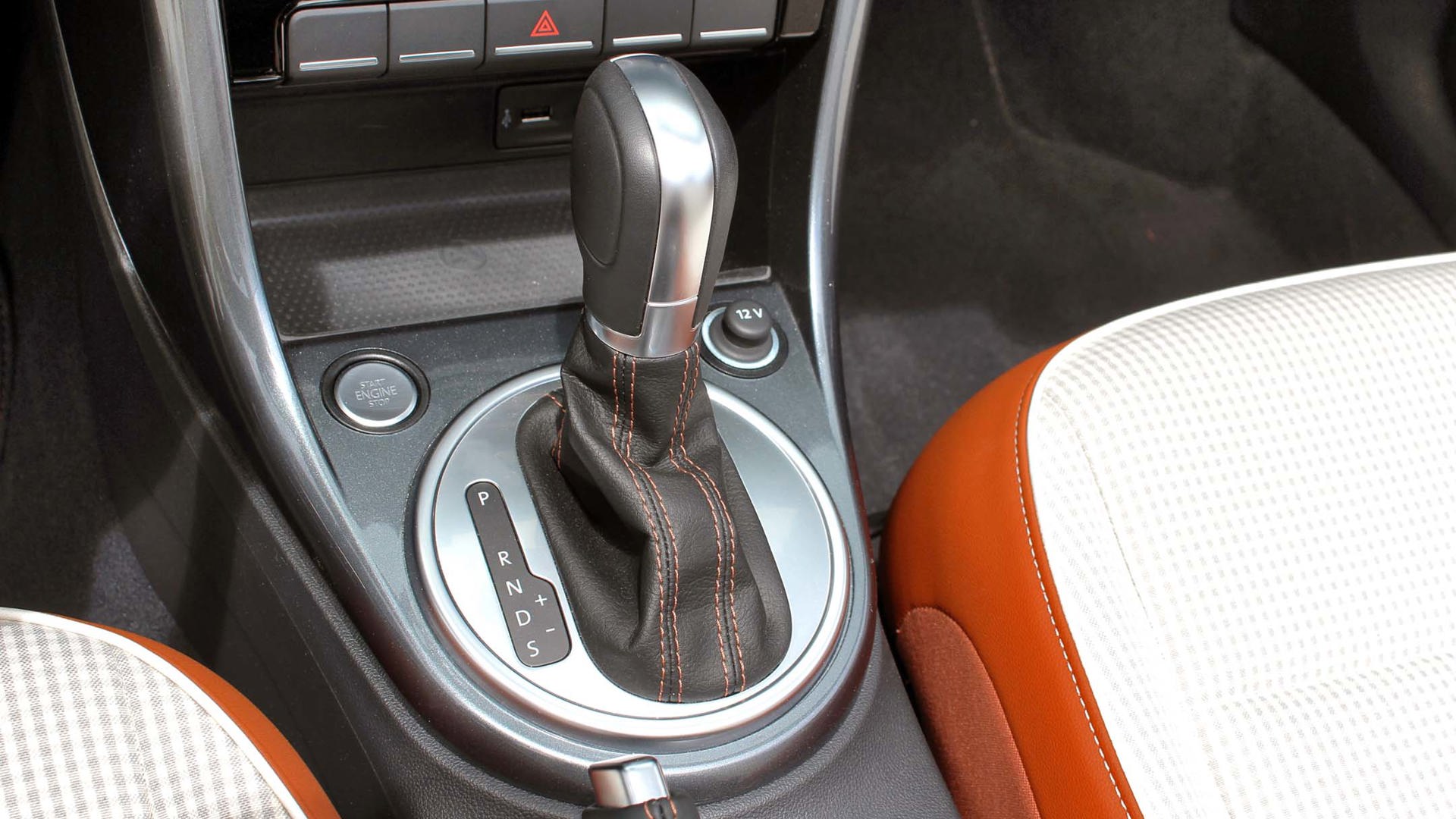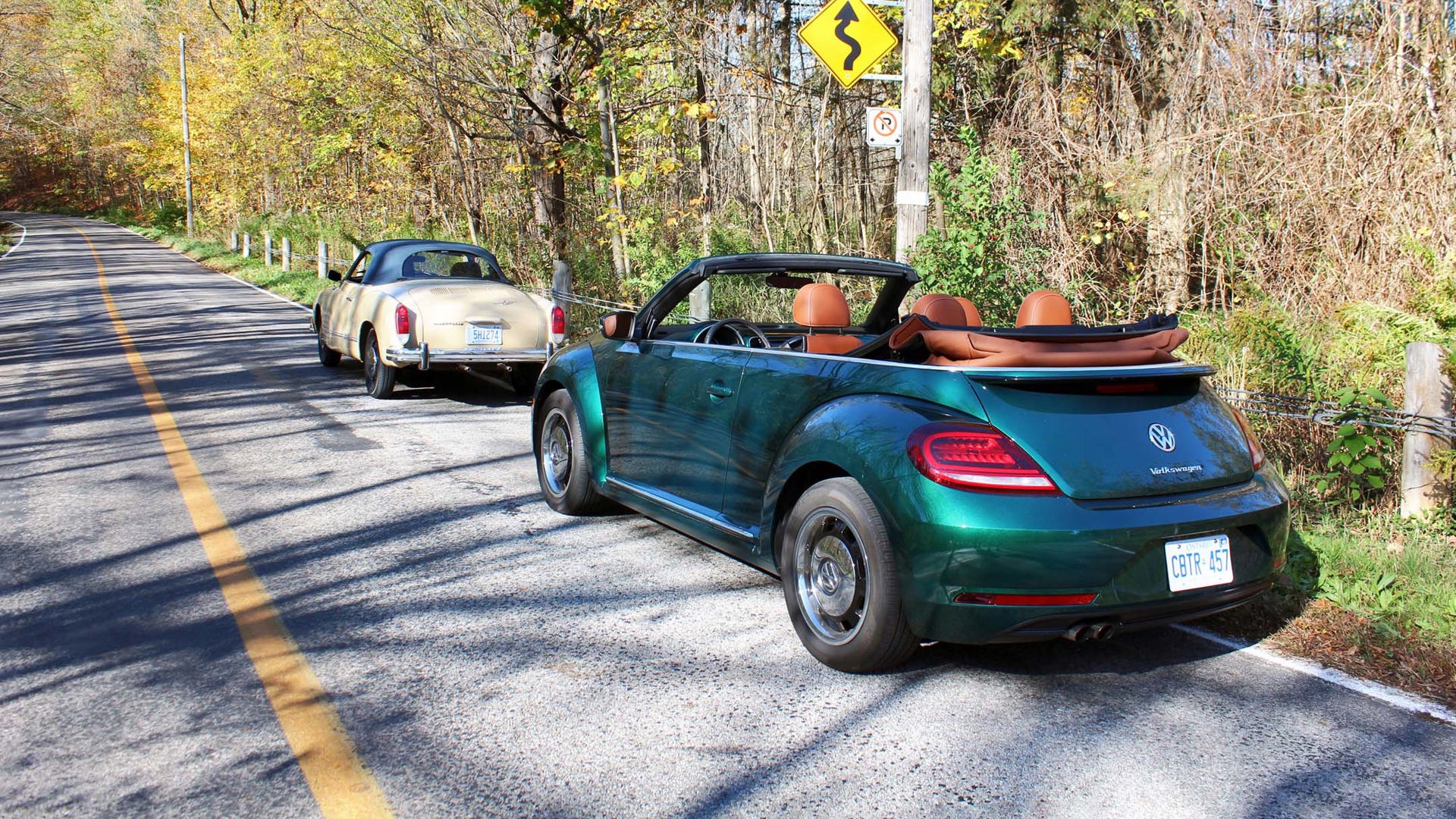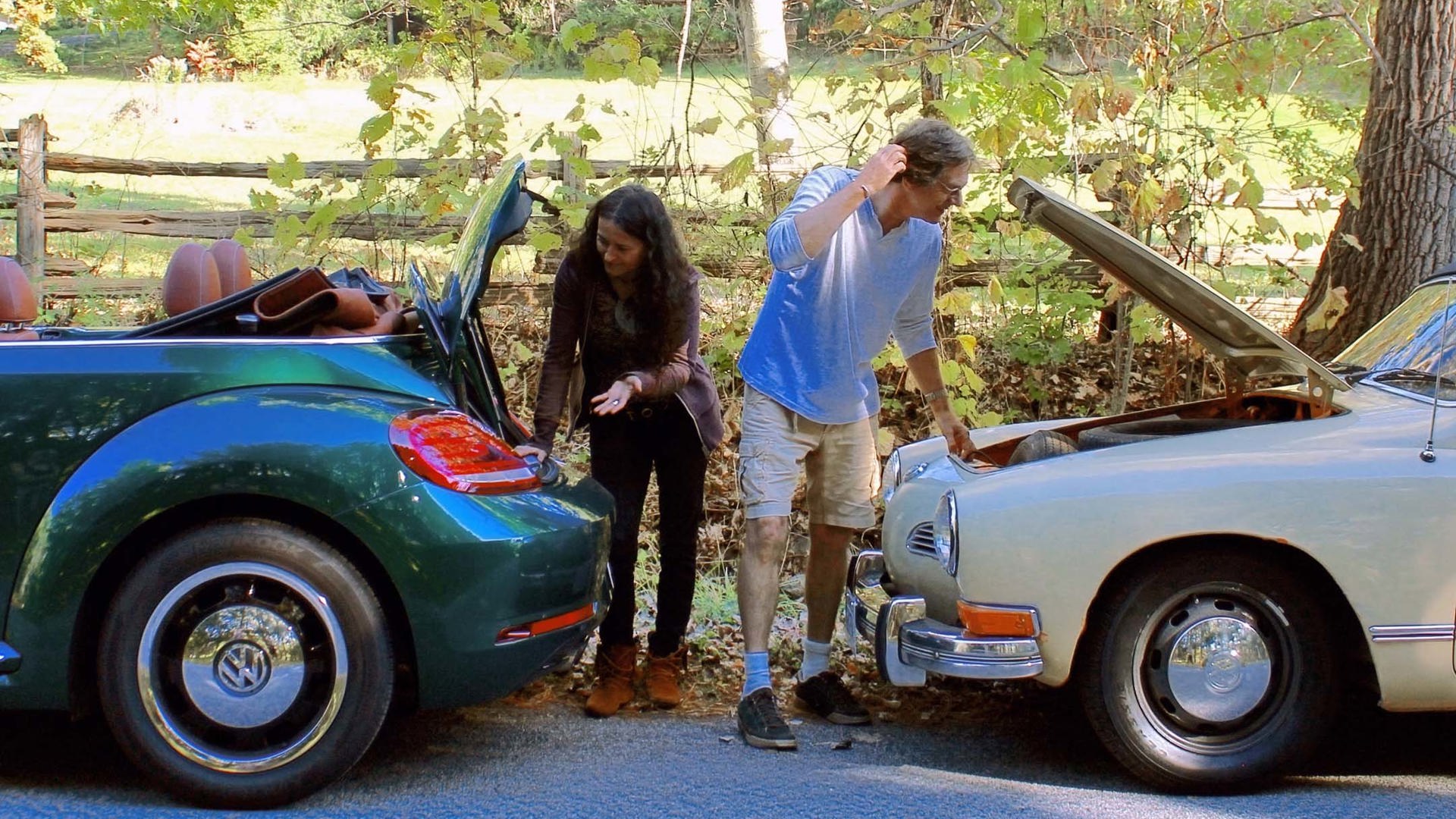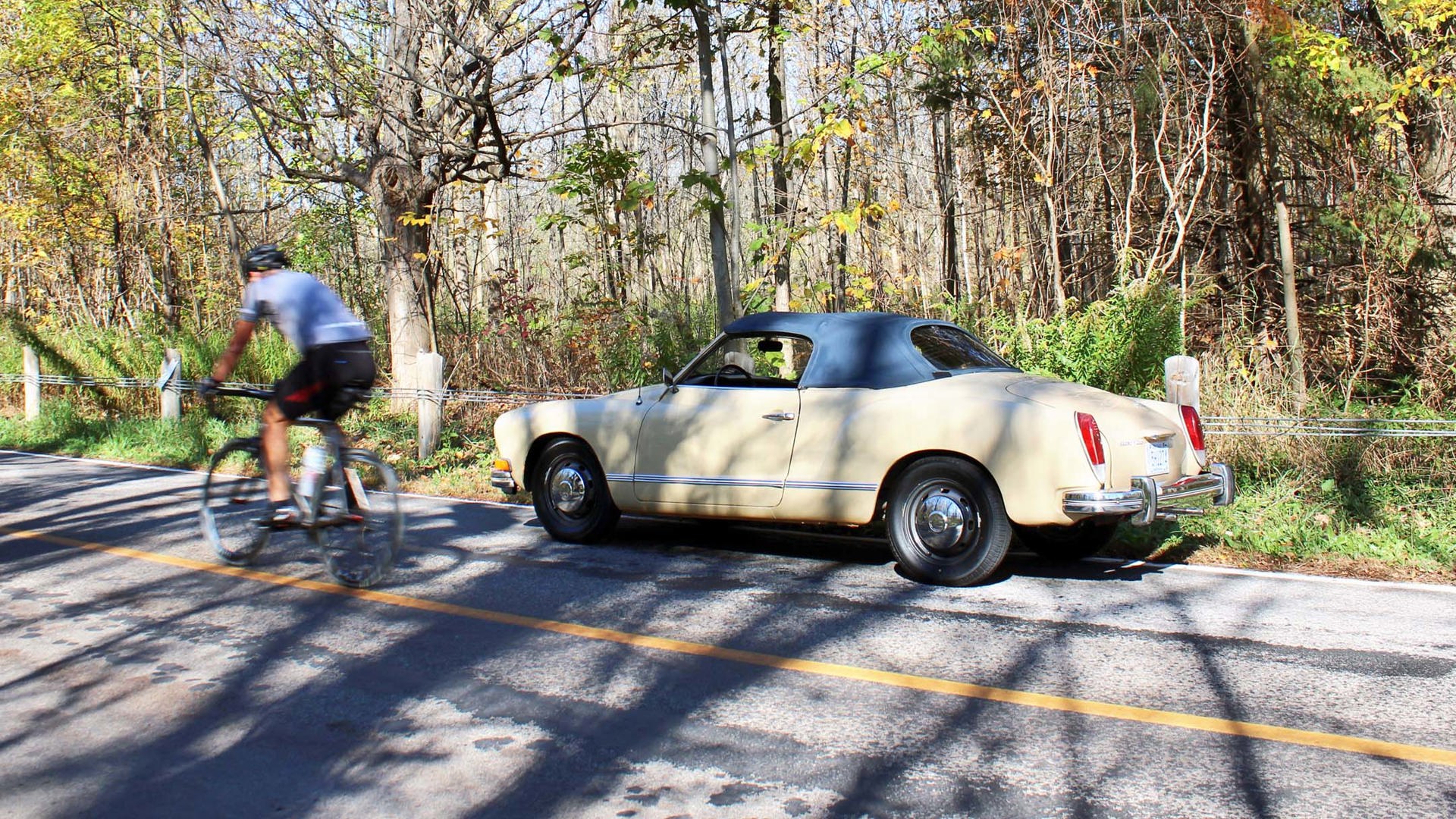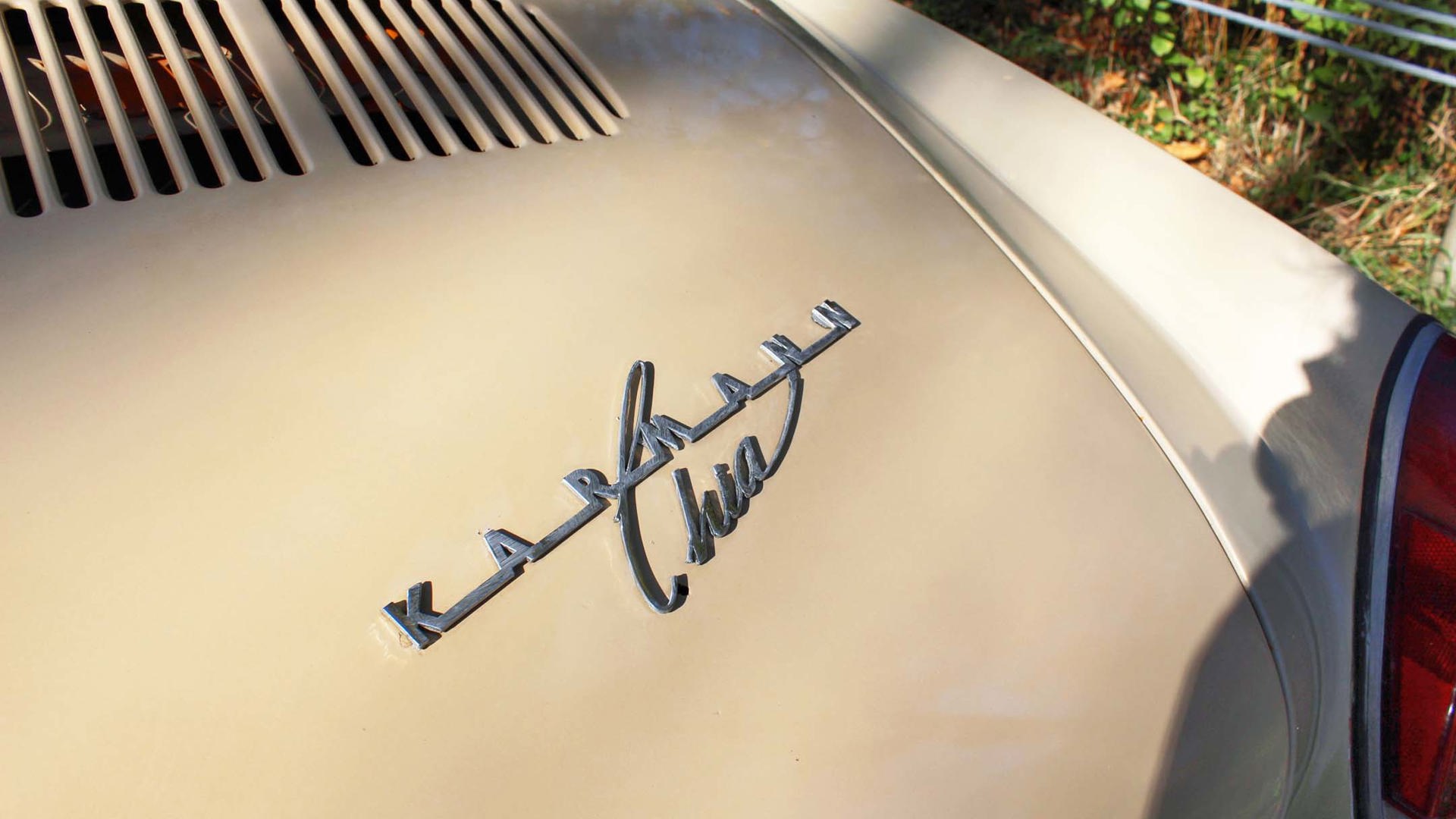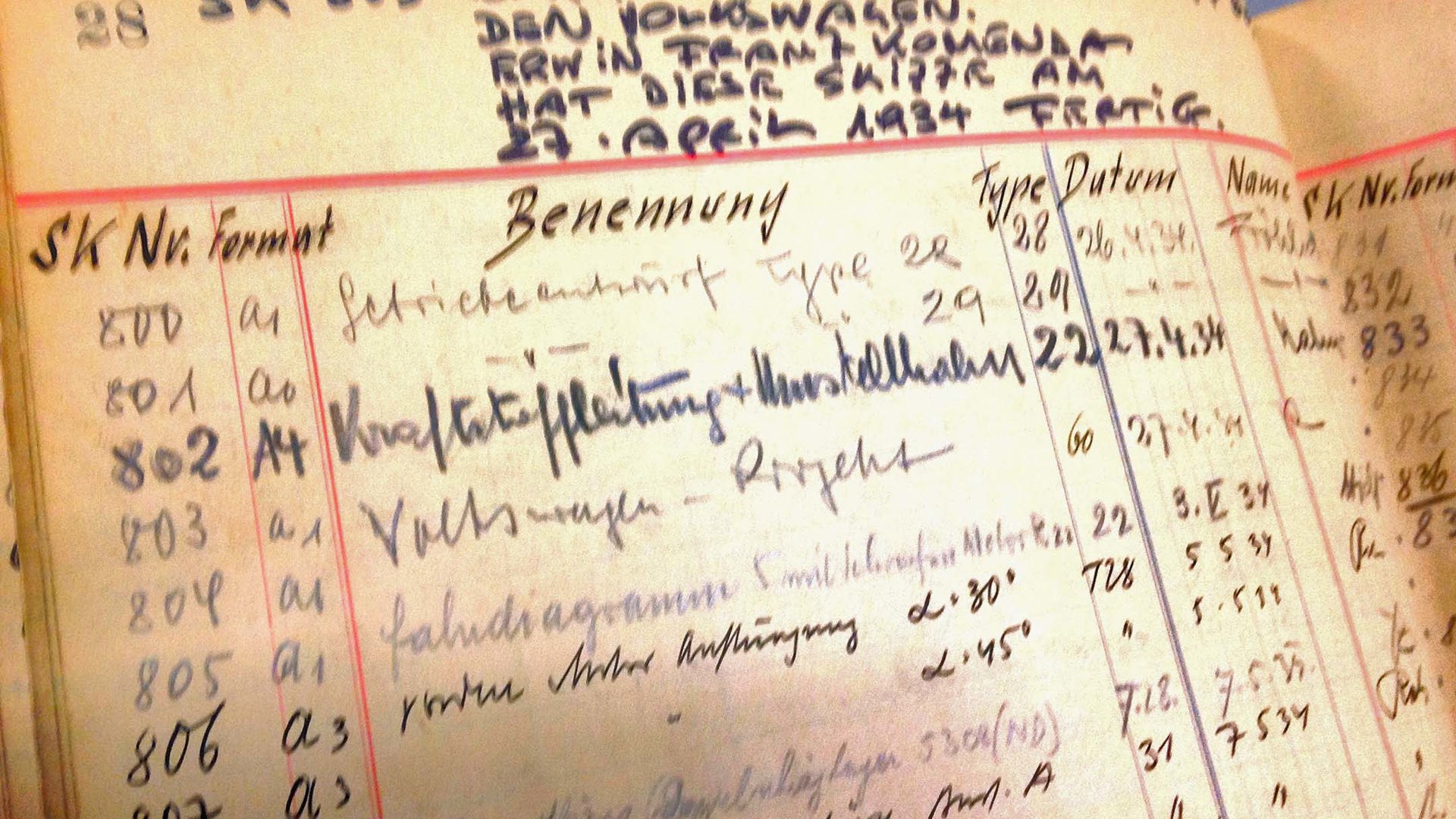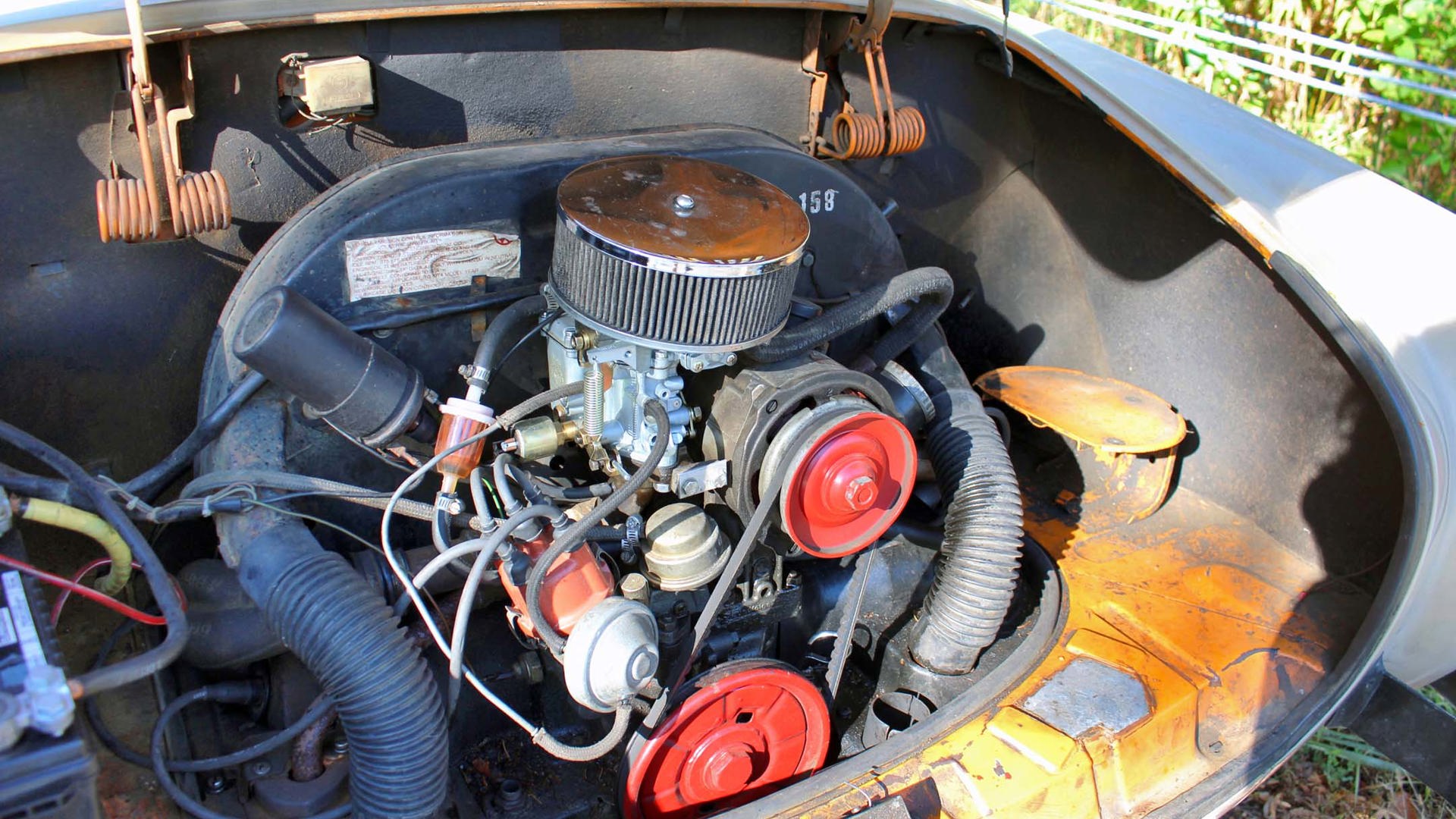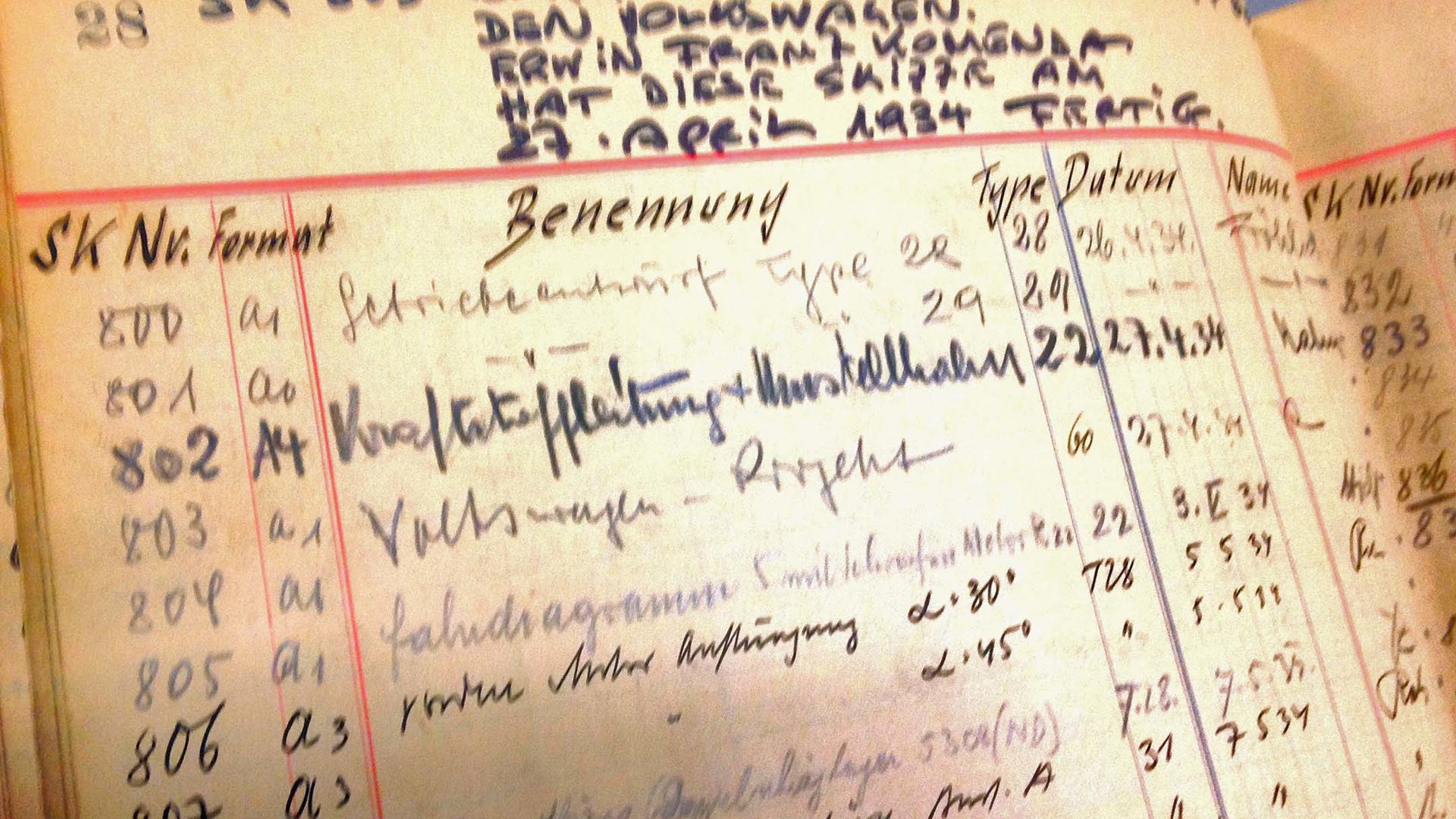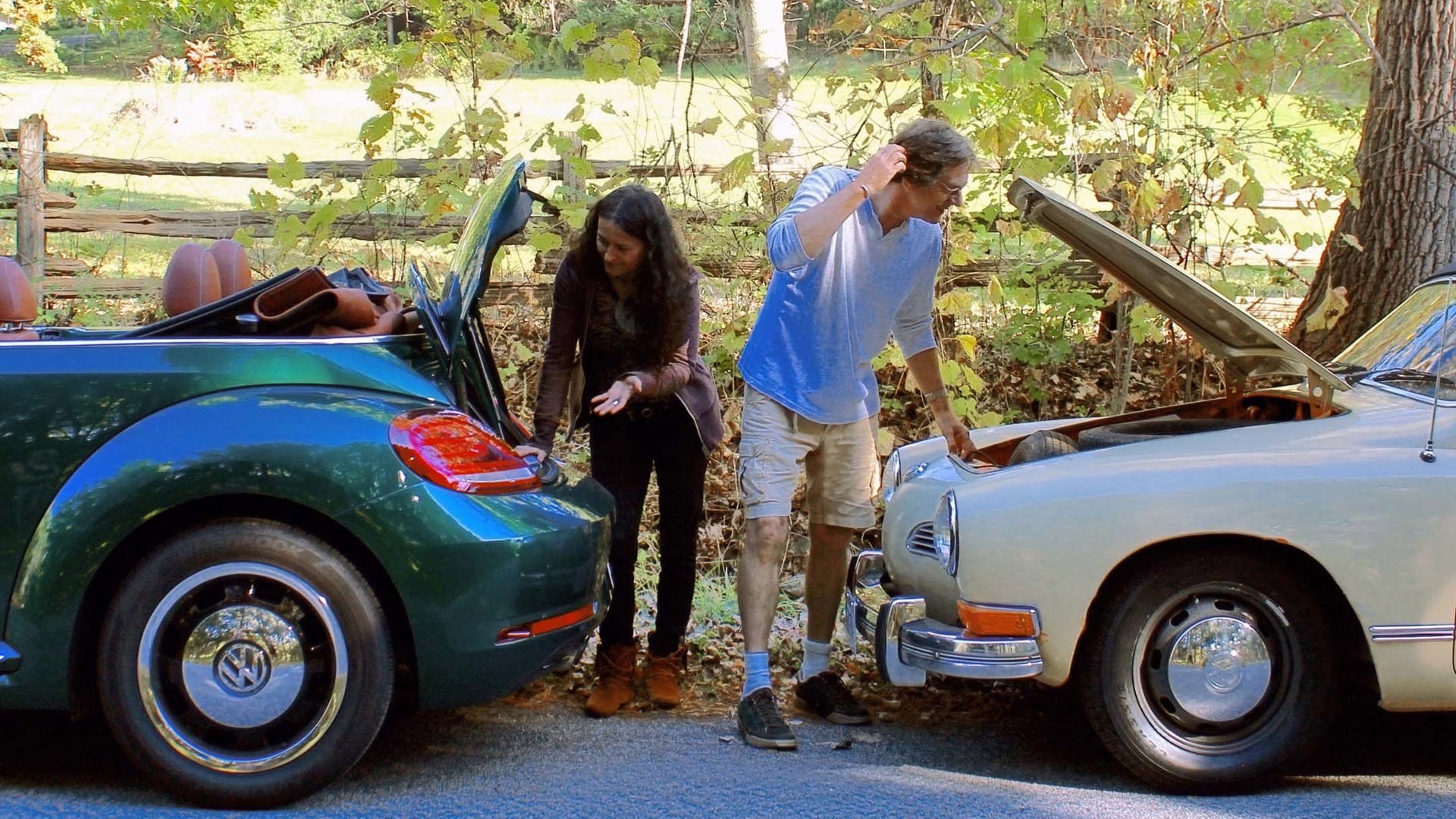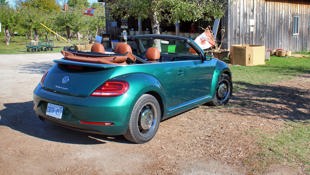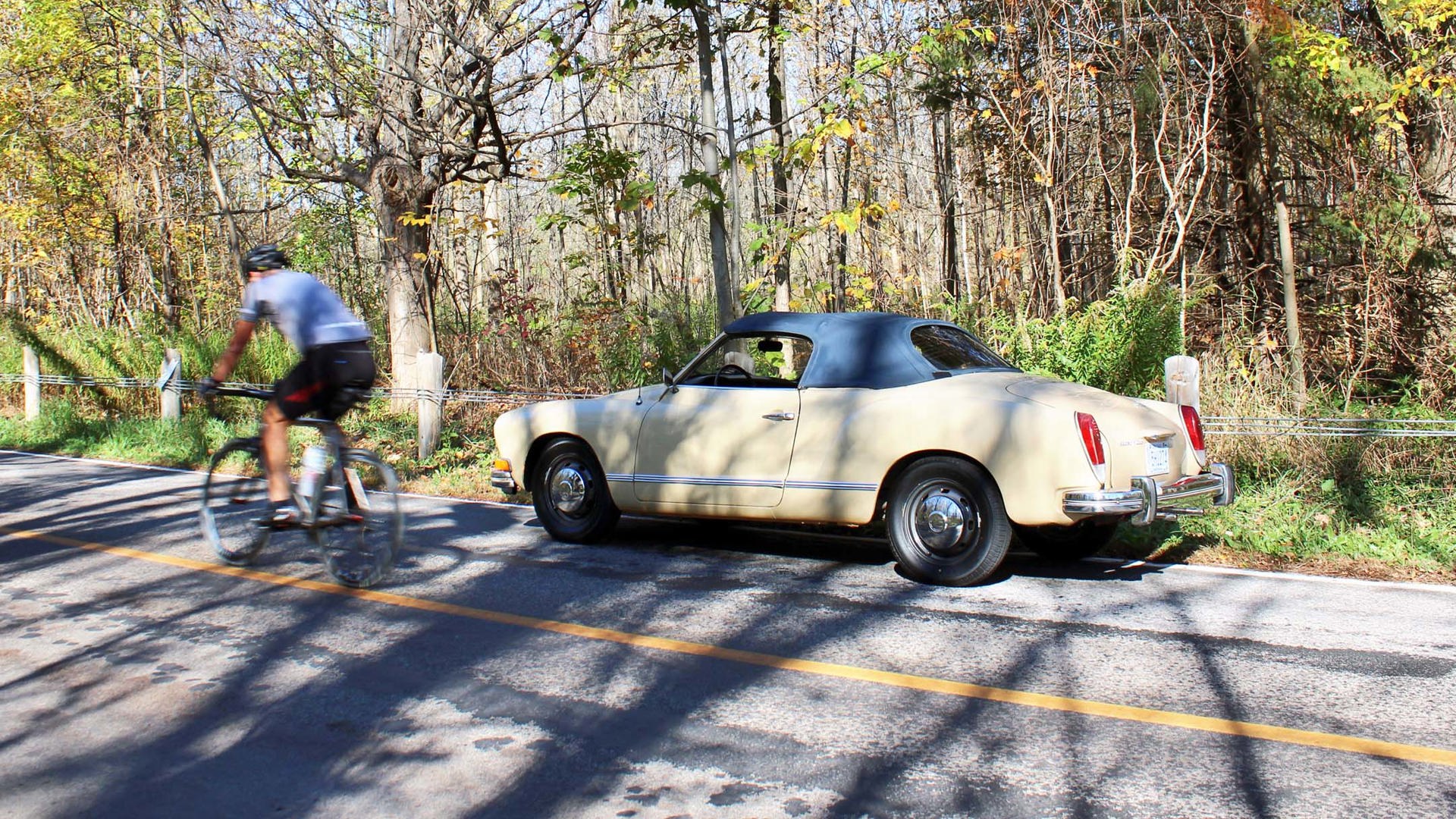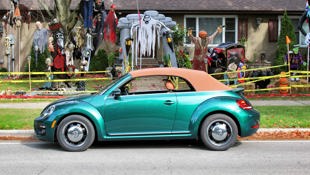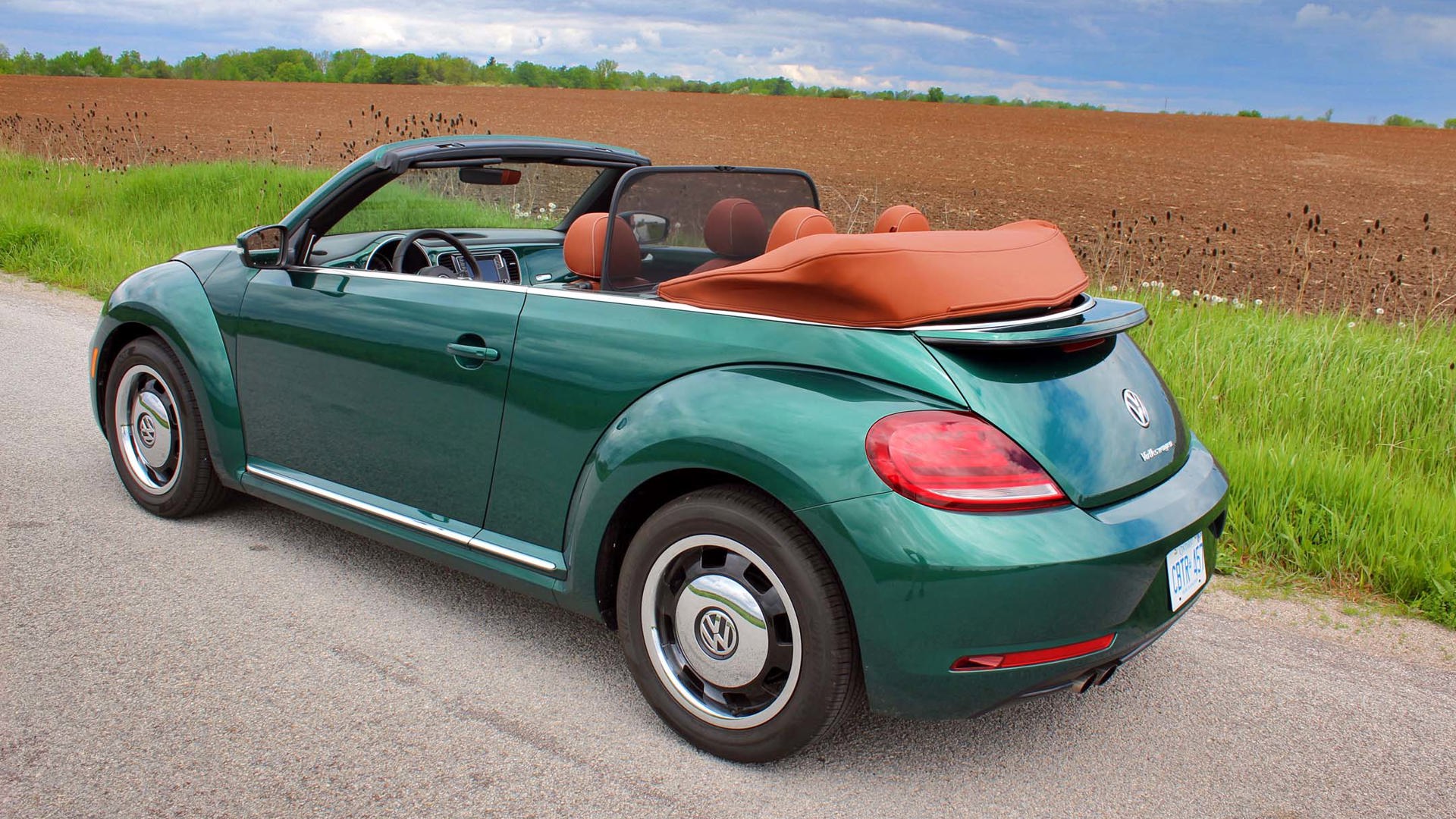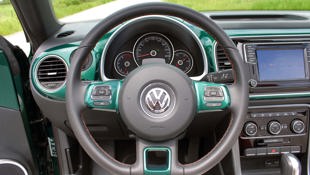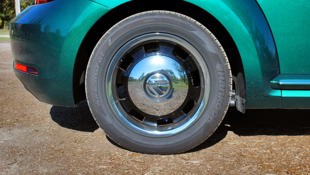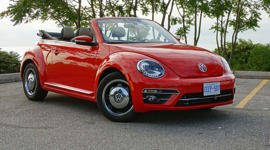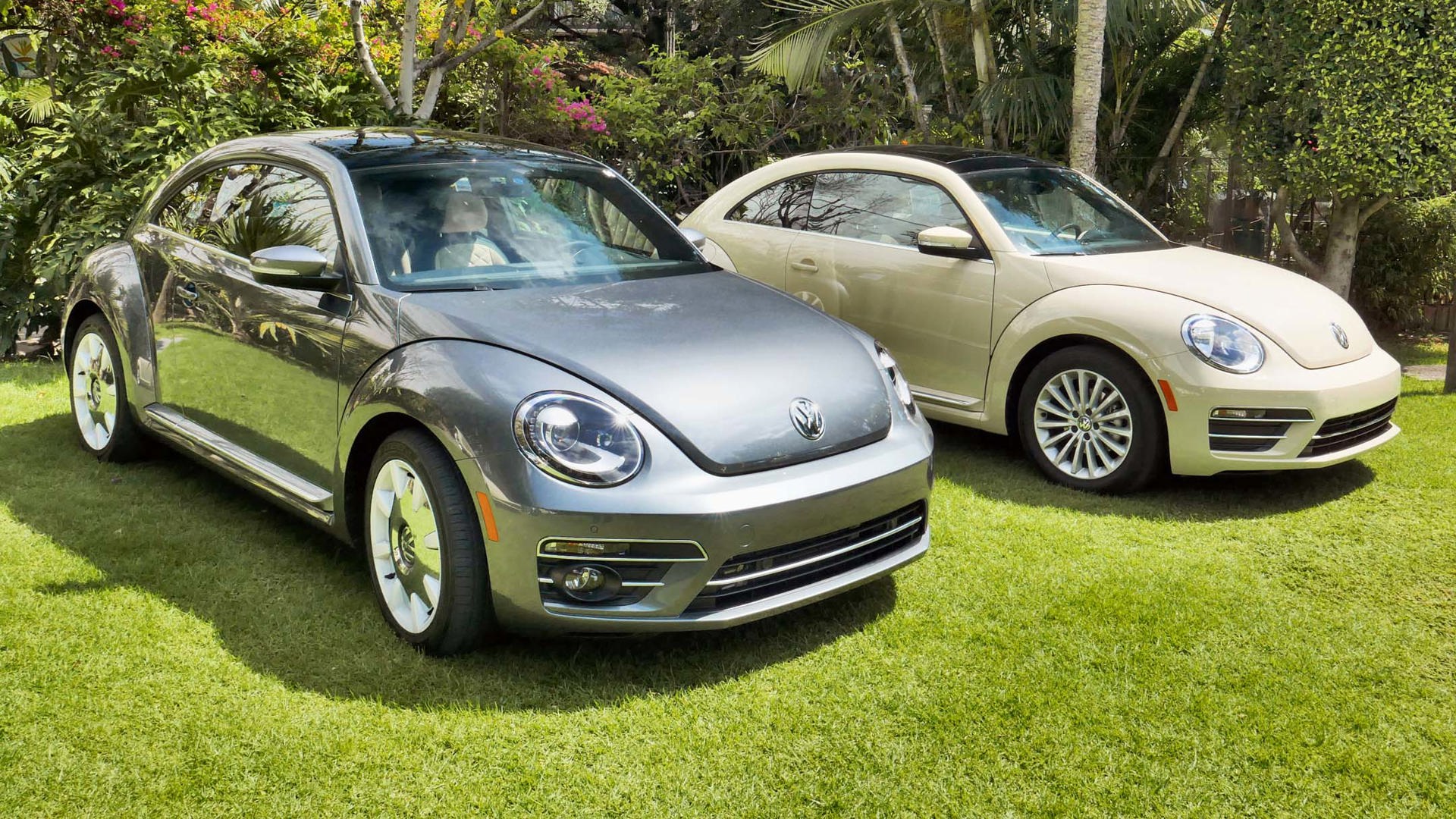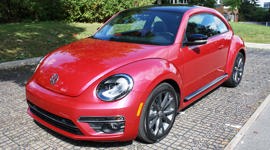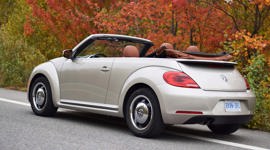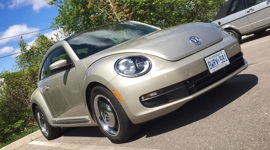 AutoTrader SCORE
AutoTrader SCORE
-
STYLING9/10
-
Safety8/10
-
PRACTICALITY5/10
-
USER-FRIENDLINESS7/10
-
FEATURES7/10
-
POWER8/10
-
COMFORT8/10
-
DRIVING FEEL8/10
-
FUEL ECONOMY7/10
-
VALUE8/10
The gods of top-down motoring were smiling that late October day when I met with keyboardist Christina Melanie, she in her 1974 Volkswagen Karmann Ghia ragtop, and me in a 2017 VW Beetle Classic Convertible. It was warm, sunny, and the fall colours in beautiful Halton Hills were in full display.
The Beetle is all about the cruise, with a fabulously compliant suspension that straddles the ride/handling balance with aplomb. Maybe even two plombs.
The gods of vintage VWs, however, were not quite so benevolent. On the way to our meeting, the Karmann Ghia’s 1.6L flat-four started running rough, and stalled when dropping to idle. One of the tires was losing air, and to top things off, we couldn’t drop the roof because the glass rear window, which needs to be removed first, refused to come out.
But was that enough to dissuade us from embarking on a bucolic, albeit brief fall tour? Hell no. We pumped up the tire in my driveway and, with CAA card in hand, ventured forth into the unknown.
If you’re lucky enough to have access to Dr. Ferdinand Porsche’s personal log book that resides in the Porsche Museum’s archives in Stuttgart, there’s an entry dated 27-4-(19)34 that is simply marked Volkswagen Projekt – apparently the first recorded mention of VW. Christina’s Karmann Ghia marks about 40 years on from this scribbling. Add another 43 years to that for my “Bottle Green” Beetle Classic.
The funny thing is, if Prof. Porsche were to gaze upon these two Volkswagens, he’d likely recognize the current Beetle as his own before the ’74 Ghia. Sure, this Mexican-built Beetle redux now carries its engine in the front and is blessed with a heater that actually works, but its old-timey curves are unmistakable. Hats off to Volkswagen for keeping its heritage alive with this charming slice of whimsy. Beneath the retro skin is a great driving car based on the current Jetta platform.
The original Volkswagen Beetle was produced from 1938 to 2003, and with over 21 million sold, it is the most populous automobile the earth has ever known. The front-drive “New Beetle” broke cover in 1997, and now we’re into the car’s third generation.
The Classic is the Beetle’s second-tier trim level, one up from the base Trendline, and unlike some other cutesy Euro retro special editions of late (e.g. the Fiat 500 1957), the Beetle Classic carries a somewhat retro price tag: $21,990 for the hardtop with five-speed manual. This convertible with six-speed auto lists for $27,390.
I led the way in the modern V-dub, with one eye glued to the rearview mirror. Christina’s little beige torpedo on the skinny tires was gamefully keeping up, although our pace could be charitably described as leisurely. At the best of times, the 1.6L flat four in a 1974 Kramann Ghia makes 46 hp at 4,000 rpm and 72 lb-ft of torque at 2,800 rpm. On this day, I’d venture a guess that at least a dozen of those ponies had cantered off to the glue factory.
No worries with power in the Beetle. Volkswagen’s 1.8L TSI turbo mill is a real sweetheart. Now the base engine for the Golf, Jetta, Passat, and Beetle, the TSI delivers its 170 horsepower and 184 lb-ft of torque in a turbine-smooth and quiet rush. The Beetle surges forward with little fuss from any speed, helped along by a smooth shifting six-speed auto. And bonus: it runs on regular grade fuel.
The Classic gets a rear spoiler and charming 17-inch alloys that mimic the old chrome ring and hubcap look. Just like Christina’s Karmann Ghia. And you gotta love the two-tone checked cloth seats with tan leatherette trim. Another retro touch is the dash panel colour-coded to the exterior.
Modern flourishes include heated seats, cruise control, auto-dimming rear-view mirror, rain-sensing wipers, a 6.33-inch touchscreen with proximity sensor, back-up camera, Apple CarPlay, Android Auto, and SiriusXM. Sprucing up this tester is the $2,520 style package that adds automatic climate control, LED taillights, HID headlights with LED accents, fog lights, proximity key with push-button start, and a very good sounding eight-speaker audio system tuned by Fender.
We stopped on a relatively deserted road to snap some photos, after which we switched rides. Jumping into the Karmann Ghia is a time warp. The door clicks shuts like that of an old fridge. One hand on the pencil-thin wheel, and the other on the fabulously floppy, long-throw four-speed stick. Oh yeah, and the pedals are offset to the right. With no sound insulation to speak of, the cabin reverberates with the cacophony of a straining, carbureted flat-four. Terrific.
Once under way, the unassisted steering lightens up and progress is underscored by the racket of the 1.6 gradually working up enough steam to allow for an upshift. The squirrels are outrunning me, but I feel like we’re flying. Yesterday, this engine was running perfectly, and had that been the case today, the fuzzy-tailed rats wouldn’t have stood a chance.
It’s a raw, elemental, and ultimately mechanical experience. I never got fast enough to experience the infamous handling traits of these old V-dubs that see-saw between reluctant and diabolical. Probably a good thing.
At our next stop, Christine gets out of the Beetle Classic and declares, “It’s so smooth and quiet. It feels like it’s electric.” She’s not so far off with that observation. The Beetle is all about the cruise, with a fabulously compliant suspension that straddles the ride/handling balance with aplomb. Maybe even two plombs. This chassis might be a generation old (the newer modular MQB platform now underpins most VWs and small Audis) but this Classic shows the poise, refinement, and intangible sense of solid engineering that has defined Volkswagen.
The fully automated (and thickly insulated top) drops in seconds, and if you’re feeling especially nostalgic there’s a fussy vinyl tonneau cover that puts a finishing touch on the look. I suspect this item will stay in the garage as it hogs most of the puny trunk space.
One could conclude that about the only thing these two Volkswagens have in common is a soft top and the VW badge. The 2017 Beetle Classic Convertible is a thoroughly modern car that asks almost nothing of its driver and passengers, offering up an effortless cocktail of pace, comfort, entertainment, and refinement. Conversely, the ’74 Karmann Ghia asks for your full attention and involvement. You know you are driving this wee tinder box every step of the way. Your hearing might be numbed, but every sense is heightened.
Ah, but there is a tie that binds. Just like with the Karmann Ghia Convertible some forty-three years ago, those snagging this new Beetle Classic Convertible will be buying it with their hearts. It’s always been about the fun.
| Engine Displacement | 1.8L |
|---|---|
| Engine Cylinders | 4 |
| Peak Horsepower | 170 hp |
| Peak Torque | 184 lb-ft |
| Fuel Economy | 9.7/7.2/8.5 L/100 km city/hwy/cmb |
| Cargo Space | 201 L |
| Model Tested | 2017 Volkswagen Beetle Classic Convertible |
| Base Price | $27,390 |
| A/C Tax | $100 |
| Destination Fee | $1,625 |
| Price as Tested | $31,635 |
|
Optional Equipment
$2,520 – Style Package $2,520
|
|

